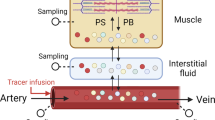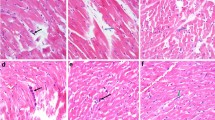Abstract
STUDIES of the distribution of intravenously injected potassium-42 in rats have shown that the kidney takes up this cation from the plasma at considerably higher rates than does any other organ1,2. In the first few minutes after the injection, the specific activity in the renal tissues exceeds that of the plasma2,3. At 2 min., approximately 15 per cent1 and 10 per cent4 of the injected dose were found in rabbit kidneys and about 12 per cent (unpublished observations) in rat kidneys. These fractions are far greater than the expected equilibrium value. Analysis of these findings indicated that all the potassium arriving in the plasma in the kidney is exchanged with potassium from cells. Morel and Guinnebault have recently presented evidence that the renal cortex is the main site of this very rapid exchange3. From their experiments it appears that in the rabbit as much as 15 per cent of the total potassium present in the cortex is exchanged per minute. This was corroborated macroscopically by autoradiography in which X-ray films were exposed to 2-mm. thick frozen kidney slices. The resulting autoradiograms indicated that in the 5 min. following an intravenous injection, the intense activity emanated from a region roughly corresponding to the cortex.
This is a preview of subscription content, access via your institution
Access options
Subscribe to this journal
Receive 51 print issues and online access
$199.00 per year
only $3.90 per issue
Buy this article
- Purchase on Springer Link
- Instant access to full article PDF
Prices may be subject to local taxes which are calculated during checkout
Similar content being viewed by others
References
Walker, G. W., and Wilde, W. S., Amer. J. Physiol., 170, 401 (1952).
Ginsburg, J. M., and Wilde, W. S., Amer. J. Physiol., 179, 63 (1954).
Morel, F., and Guinnebault, M., Helv. Physiol. Acta, 14, 255 (1956).
Emery, E. W., Holmes, R., Davies, H. G. F., and Black, D. A. K., Clin. Sci., 14, 241 (1955).
Pearse, A. G. E., “Histochemistry. Theoretical and Applied” (J. Churchill, London, 1953).
Pelc, S. R., Int. J. App. Radiation and Isotopes, 1, 172 (1956).
Author information
Authors and Affiliations
Rights and permissions
About this article
Cite this article
EISEN, V., HARRIS, F. Demonstration of Early Renal Uptake of Potassium-42 by an Autoradiographic Method for Water-soluble Isotopes of Short Half-life. Nature 180, 440–441 (1957). https://doi.org/10.1038/180440b0
Issue Date:
DOI: https://doi.org/10.1038/180440b0
This article is cited by
Comments
By submitting a comment you agree to abide by our Terms and Community Guidelines. If you find something abusive or that does not comply with our terms or guidelines please flag it as inappropriate.



